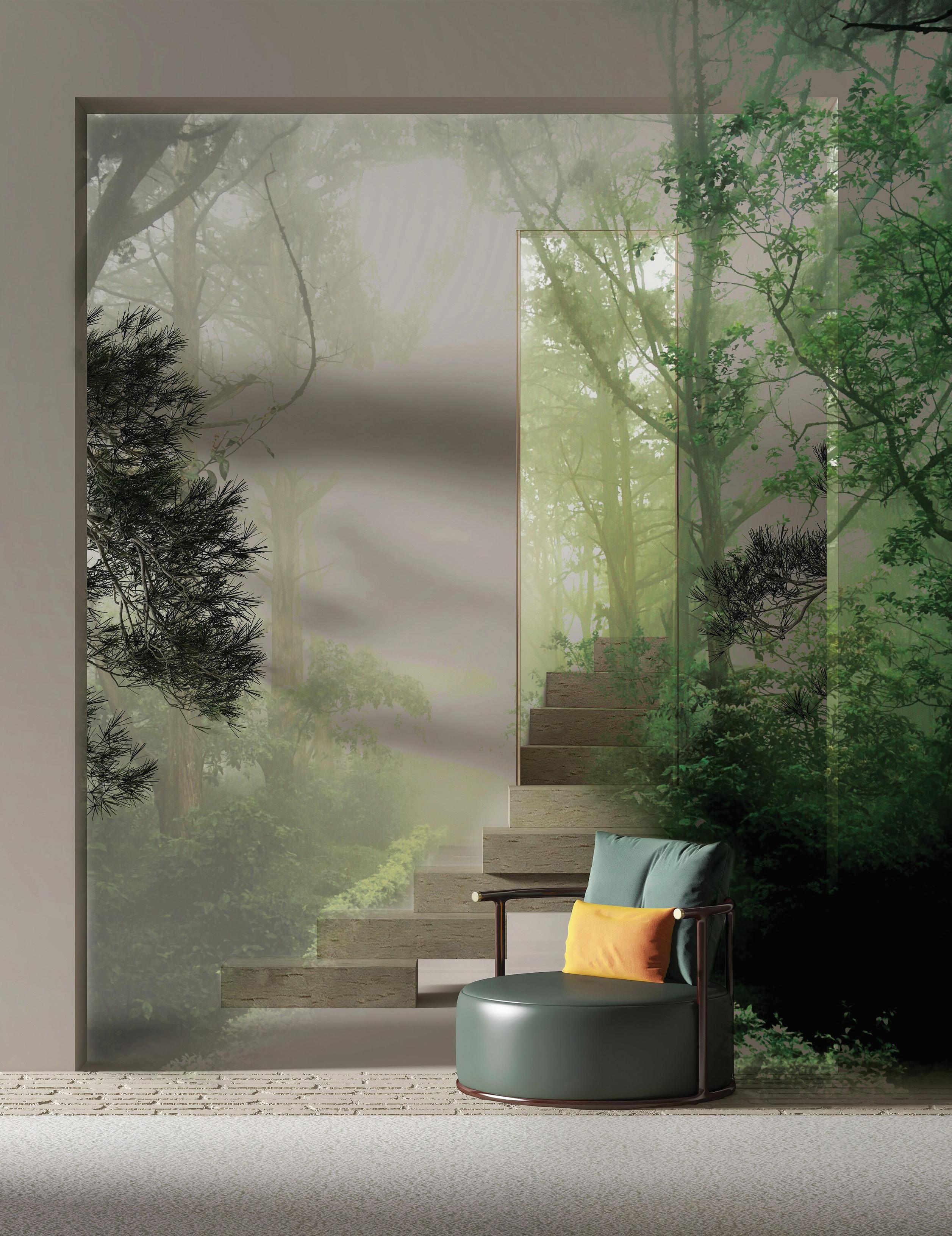





Have you noticed how a walk in the park can perk up your mood? Or how a quick trip to the great outdoors can lift your spirits? It’s because we are creatures of nature! We owe our lives to it, and our well-being is inextricably tied to it. And although this unbreakable bond between us has existed forever, we’ve only recently invented a word that defines this connection. Biophilia is the love of life or living systems. There was a time when we were always surrounded by nature and Biophilia didn’t need a word. But after centuries of rampant urbanization, we’ve been left with cement blocks, steel buildings, and massive cities across the world. There is a way to blend architecture with nature!



Before understanding Biophilic Design, let’s look at the meaning behind ‘Biophilia’. This word was created by Erich Fromm, a psychoanalyst who defined it as a ‘passionate love for all that is alive, where it’s a plant, a person, an idea or a social group”. Biophilia proposes that all humans have an innate instinct to love nature–it’s hard to argue with that. Don’t we all, deep down, long to spend time in lush greenery?

Harads, Sweden
Biosphere amplifies Treehotel’s focus on sustainability and natural tourism, helping facilitate the conservation of the local bird population. With a façade containing 350 bird nests, Treehotel aims to decrease the downward spiral of the bird population in the Swedish woods and strengthen the biosphere and natural habitat.

A natural corollary to Biophilia is Biophilic Design–a concept that uses architecture to cre ate human spaces that increase our connection with nature and enhance our well-being. This strategy looks to incorporate natural processes and elements into our everyday environments and infrastructure. Biophilic Design can not only be applied at a building level, but also at a project, community, or city level.


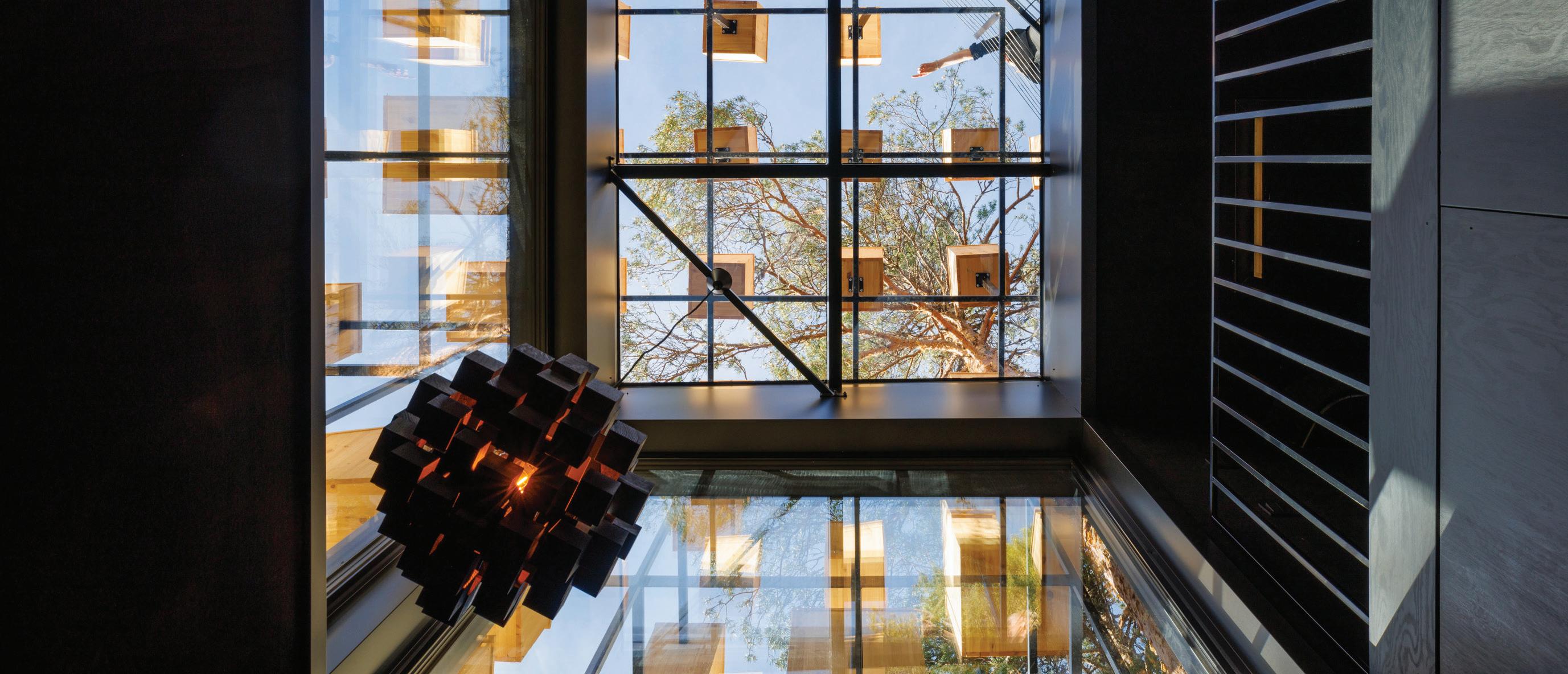
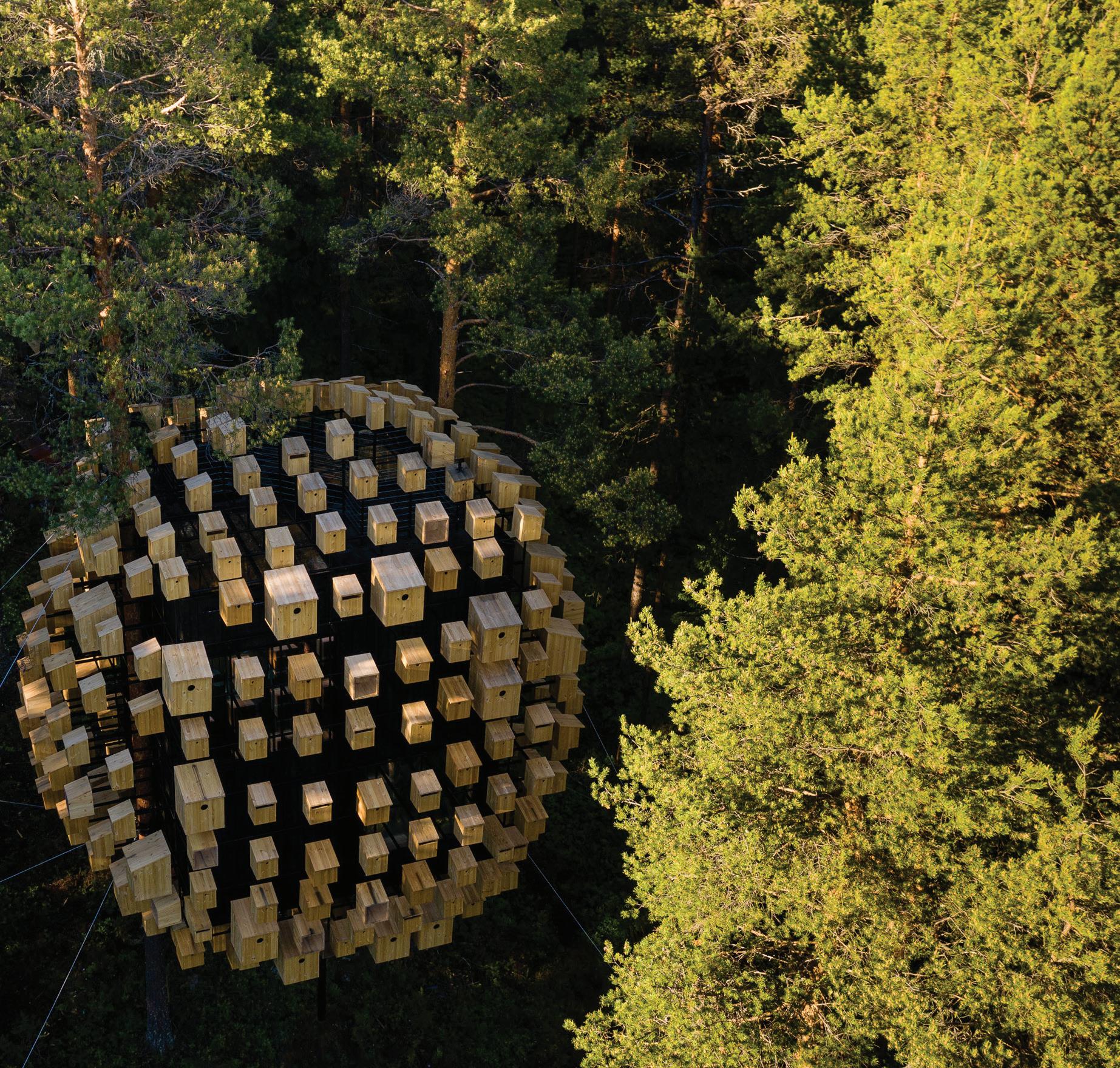
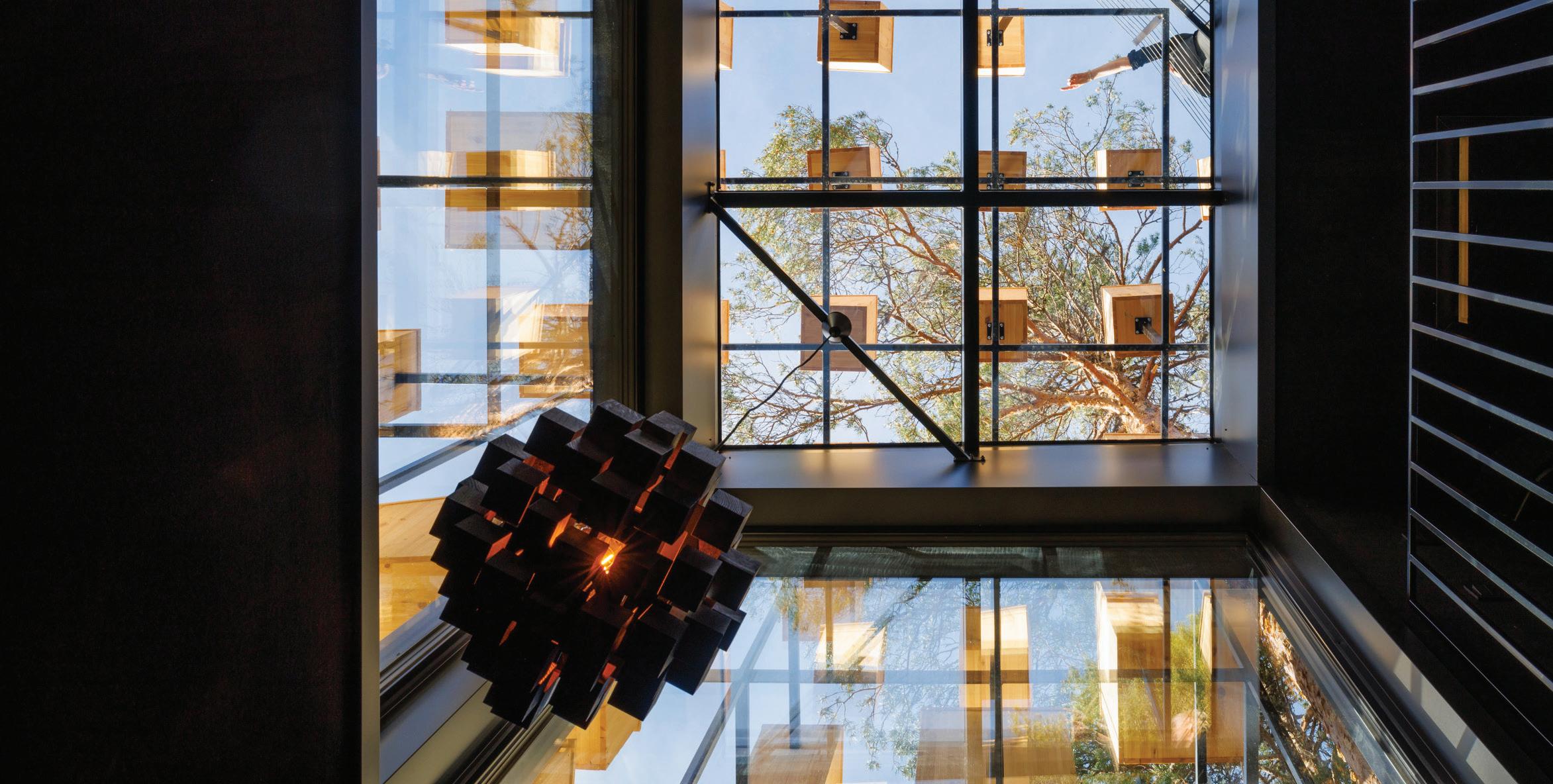
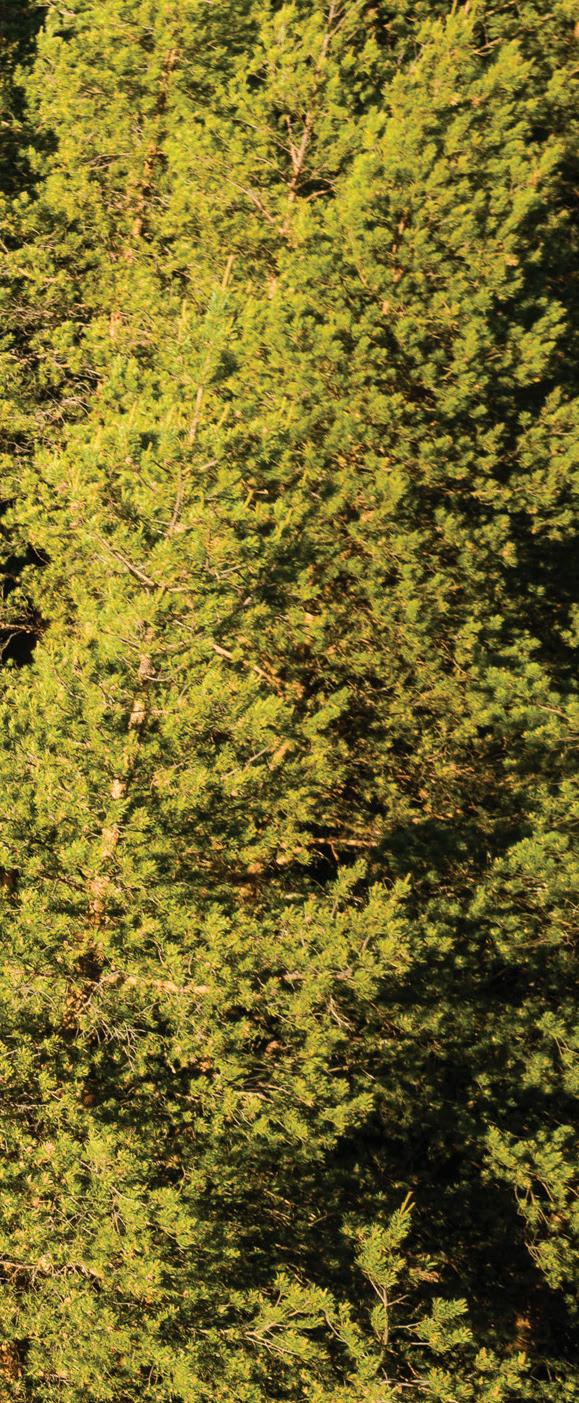


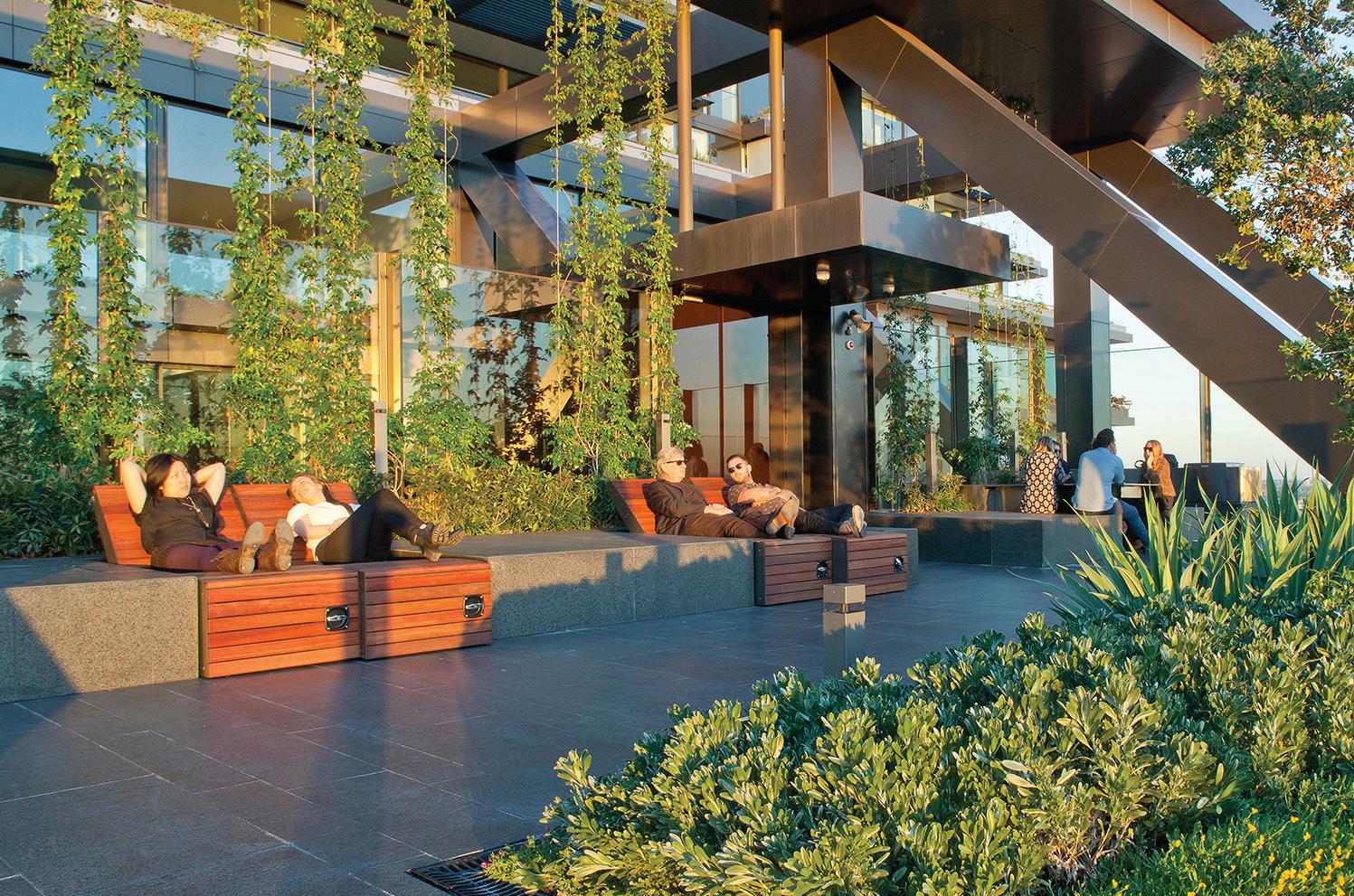
The biophilia hypothesis claims that humans have an innate affinity towards nature and that their connection is beneficial, as it does with biophilic architecture. Pioneers Stephen Kellert and Elizabeth Calabrese have created a framework with three different dimensions for Biophilic Design. According to them, these principles show how incorporating nature into the built environment can satisfy human wants, show respect to nature, and enrich our environment.

Sydney, Australia
One Central Park uses a hydroponic system to create tall vertical gardens, stretching over 50 meters high. The building is a mind-blowing effort in showcasing the possibilities of biophilic design in architecture.



The direct nature experiences aspect of Biophilic Design is exactly what it sounds like. It allows us to interact directly with green elements in our built environment! This could mean experiencing elements like natural light, plants, water features, and fresh air first-hand, even when you’re inside the building. Indoor natural landscapes like gardens and rivulets fall under this dimension of Biophilic Design. Directly interacting with these natural elements adds comfort and relaxation, while keeping our biological clock oriented to the day-night cycle. From homes, offices, hospitals to educational buildings, adding direct nature experiences can be beneficial for everyone. You can add a direct nature experience to your home pretty easily by adding a few plants around or with a table top mini garden from Green Up the City!



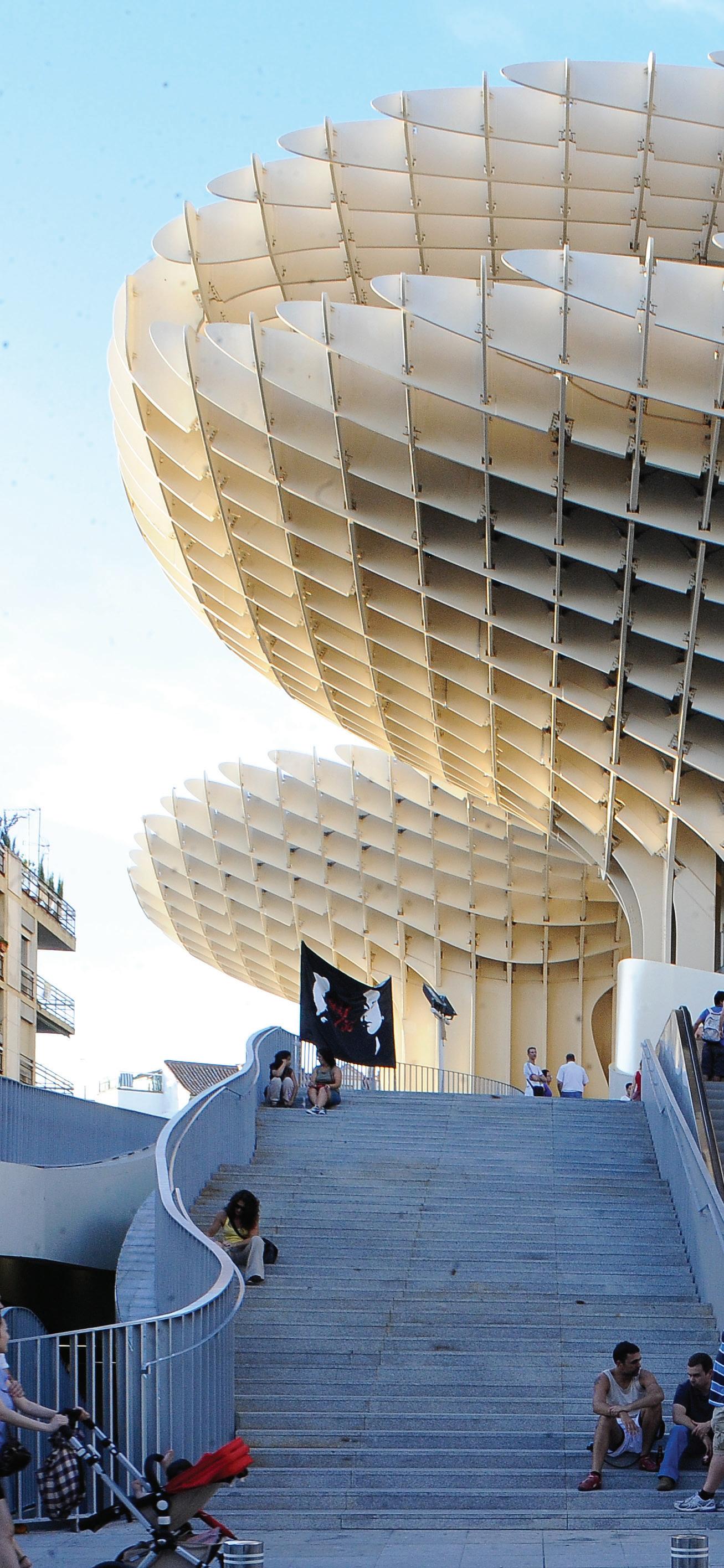
Biophilic design also uses indirect nature experiences to enhance our well-be ing and comfort. Indirect experiences include using natural earthy colors in the design, natural materials like wood, earth and even incorporating paintings, videos, and sculptures representing nature!
Using design elements with natural shapes and geometries also helps mimic natural spaces. This could mean using more flowing, gentle slopes, and geometries rather than harsh, straight angles. Or it could mean adding a few crystal elements from a trusted source like Mapu minerals in spaces that feel like they could use a natural touch.

 BY THE GERMAN ARCHITECT JÜRGEN MAYER
BY THE GERMAN ARCHITECT JÜRGEN MAYER
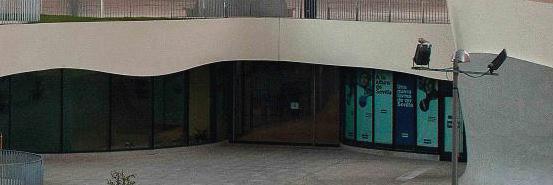
One of the largest wooden structures in the world, The Metropol Parasol has become a cultural landmark in Seville. It consists of six large mushroom-shaped timber parasols that protect an archaeological site and shade the Plaza de la Encarnación. The microlaminated timber lattice creates interesting, artistic shadows that move throughout the day and a public balcony offers beautiful, panoramic views of Seville’s old quarter.

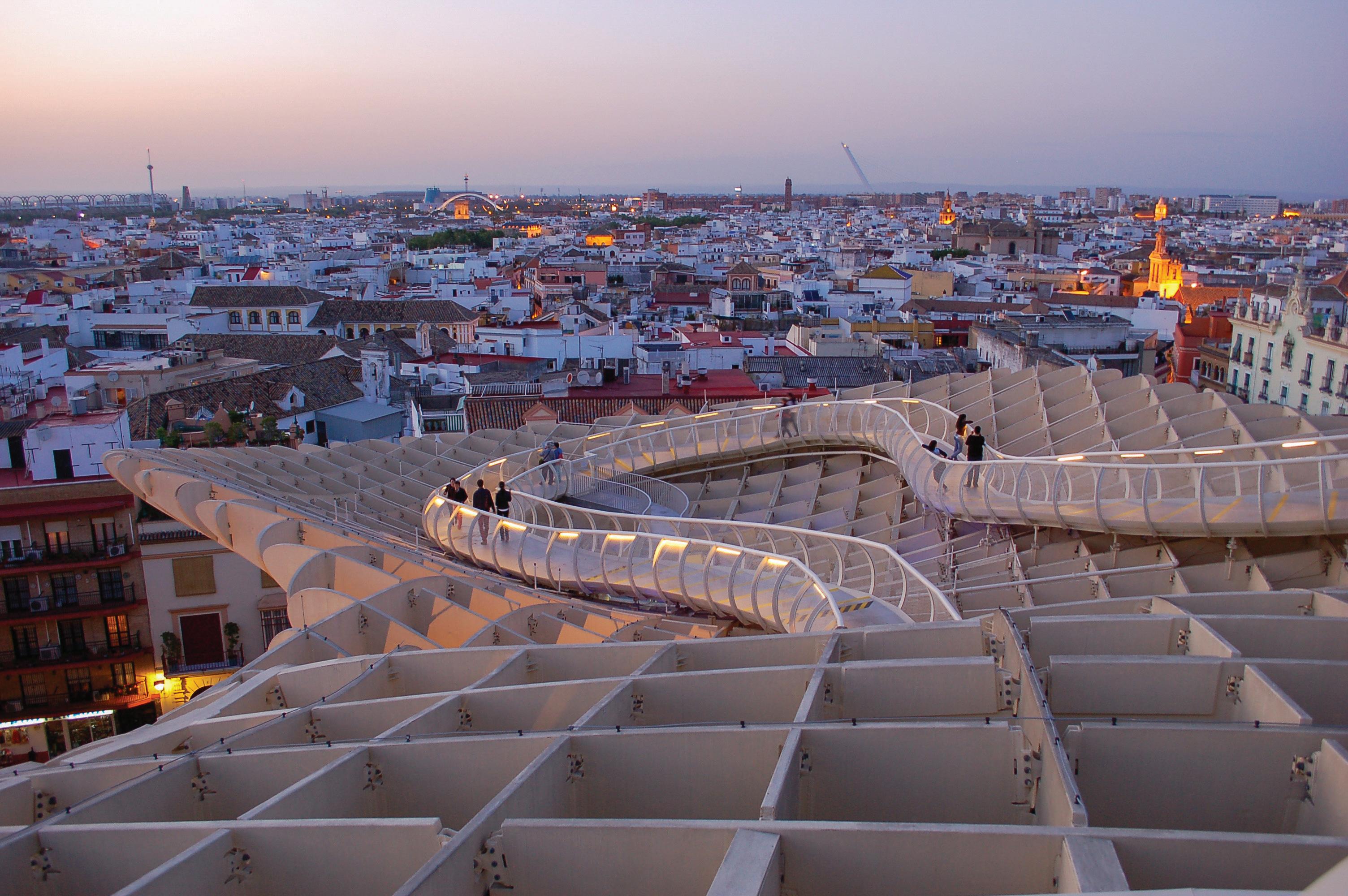
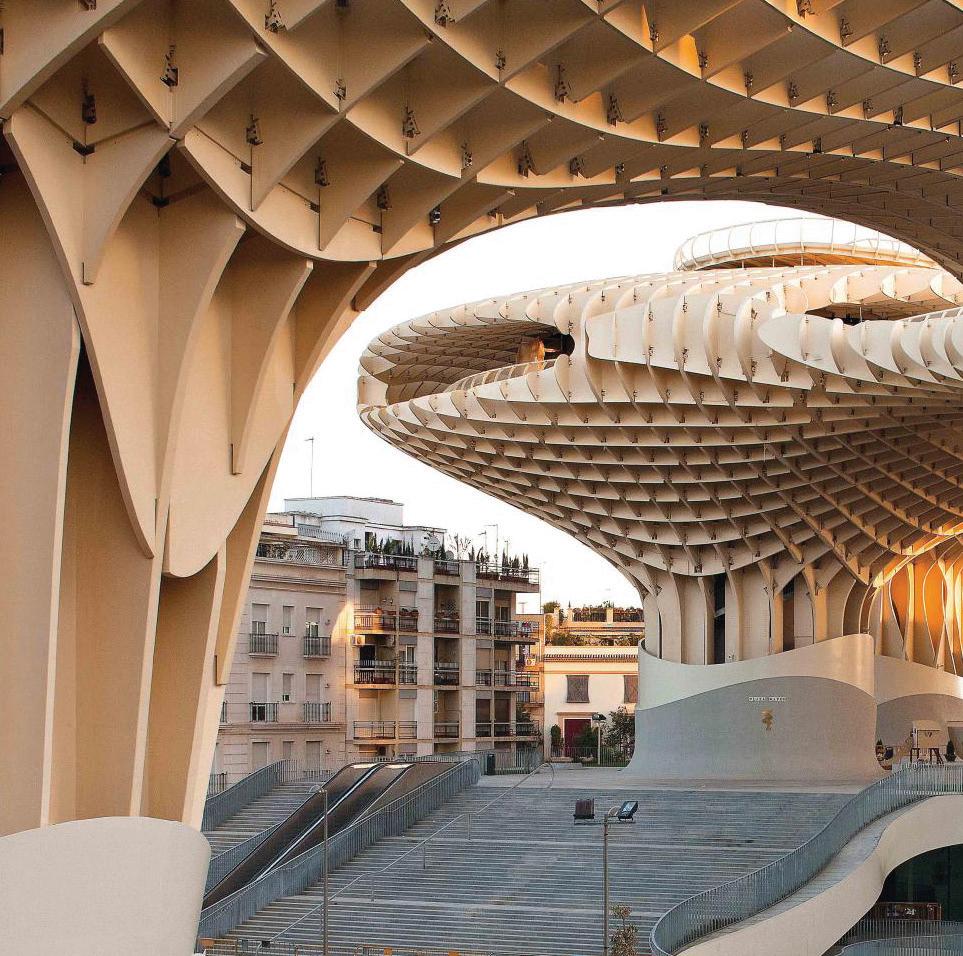



This aspect of Biophilic Architecture describes designing various spaces that can play a role in improving our well-being. One of the key elements of this aspect is called, “prospect and refuge.” Simply put, prospect and refuge tell us why certain environments help us feel both physically and psychologically secure! Ever seen a cat find a small nook in a room to sit and observe from? Well, humans are not all that different!
These types of spaces help us prospect (observe) without being seen (refuge). Designing an office or college building to have a number of sheltering spaces and nooks in a built environment is great for letting people spend time and work by themselves. This could be especially helpful for introverts who enjoy the creativity and energy that comes with solitude. Other elements of “space and place” include designing complex spaces to stimulate creativity, adding transitional zones that connect indoors with outdoors, marking clear points of access (entry and exits), or incorporating the area’s geographic and ecological history.
 BY GRANT ASSOCIATES AND WILKINSON EYRE
BY GRANT ASSOCIATES AND WILKINSON EYRE
One of the most well-known attractions in Singapore is thought to be the Cloud Forest of Gardens by the Bay. This greenhouse-like conservatory, which is located next to the Flower Dome, has spiralling walkways and one of the world’s tallest indoor waterfalls that rains water down from a height of over 35 metres.
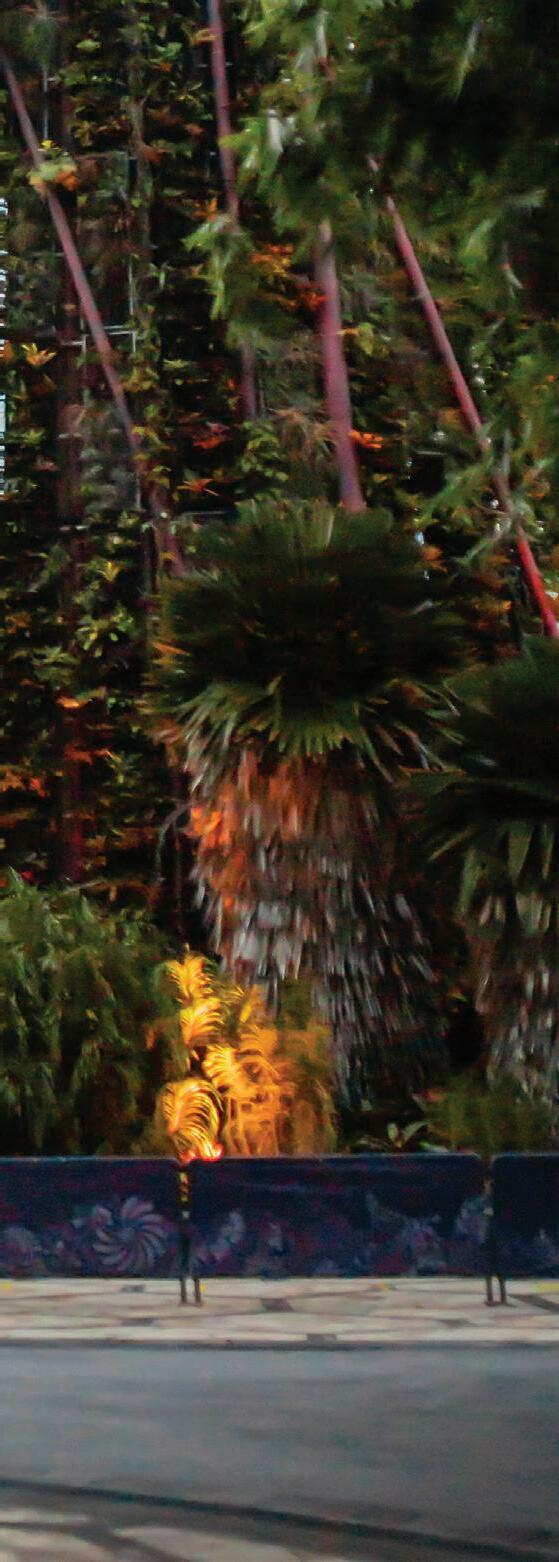

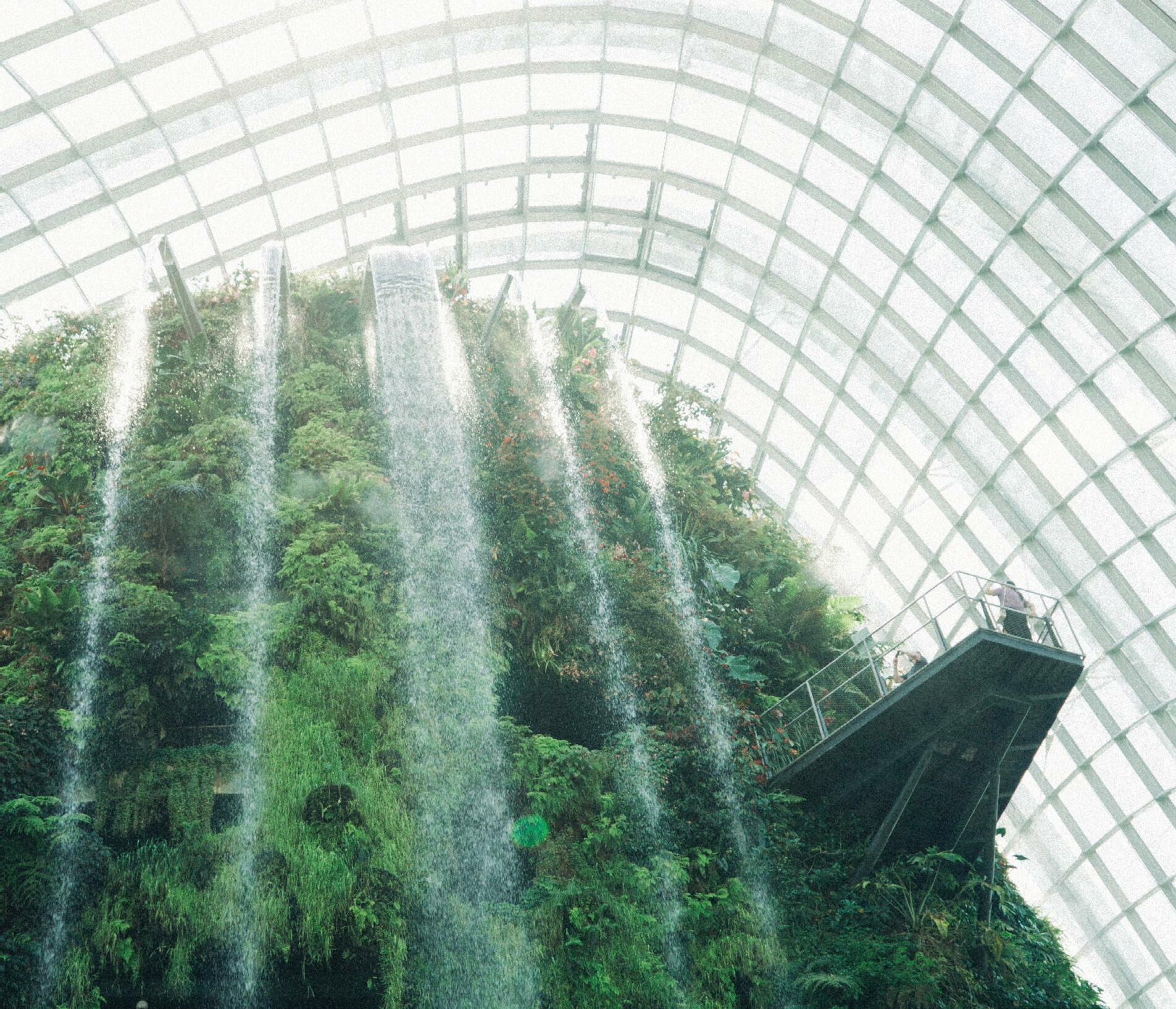


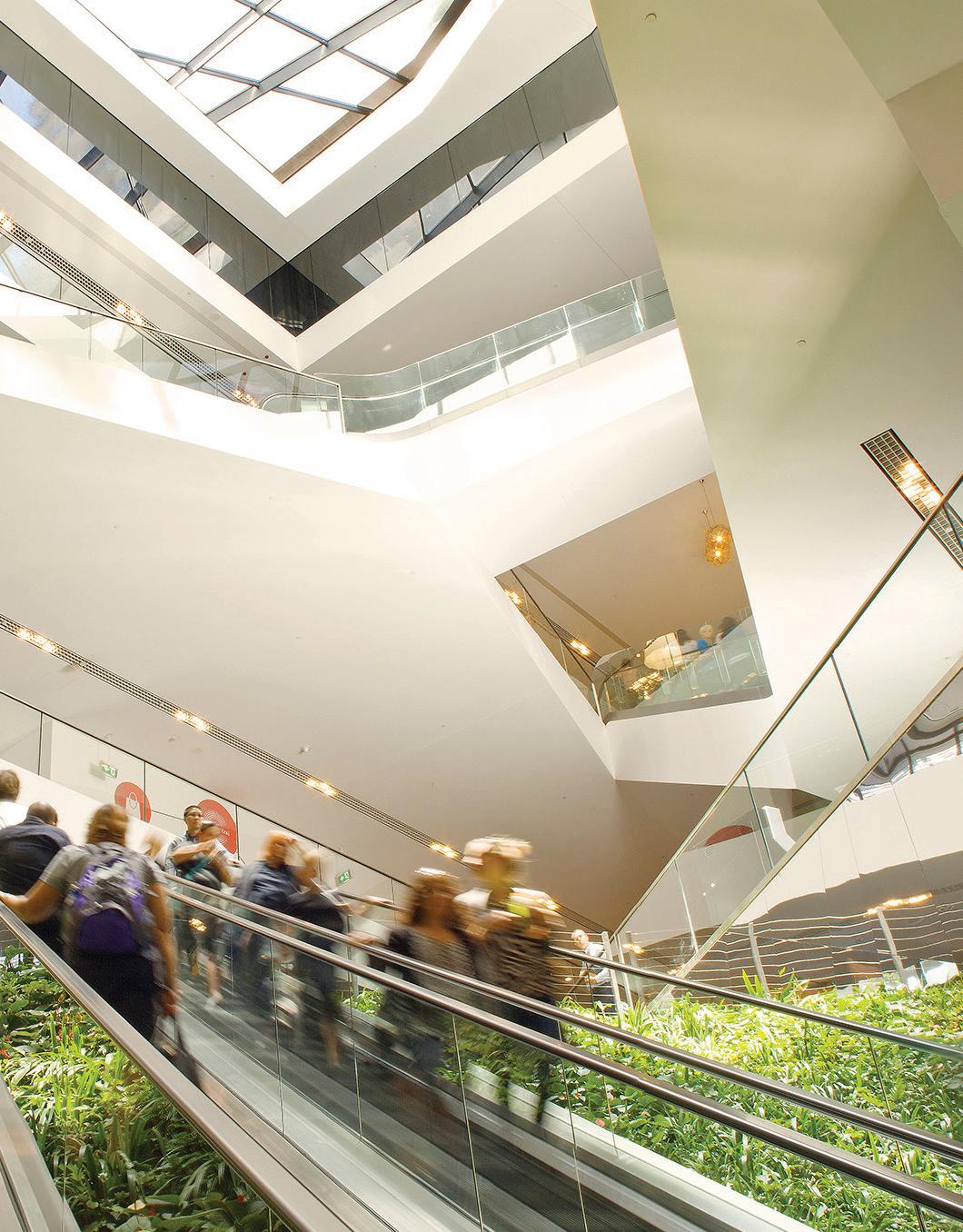
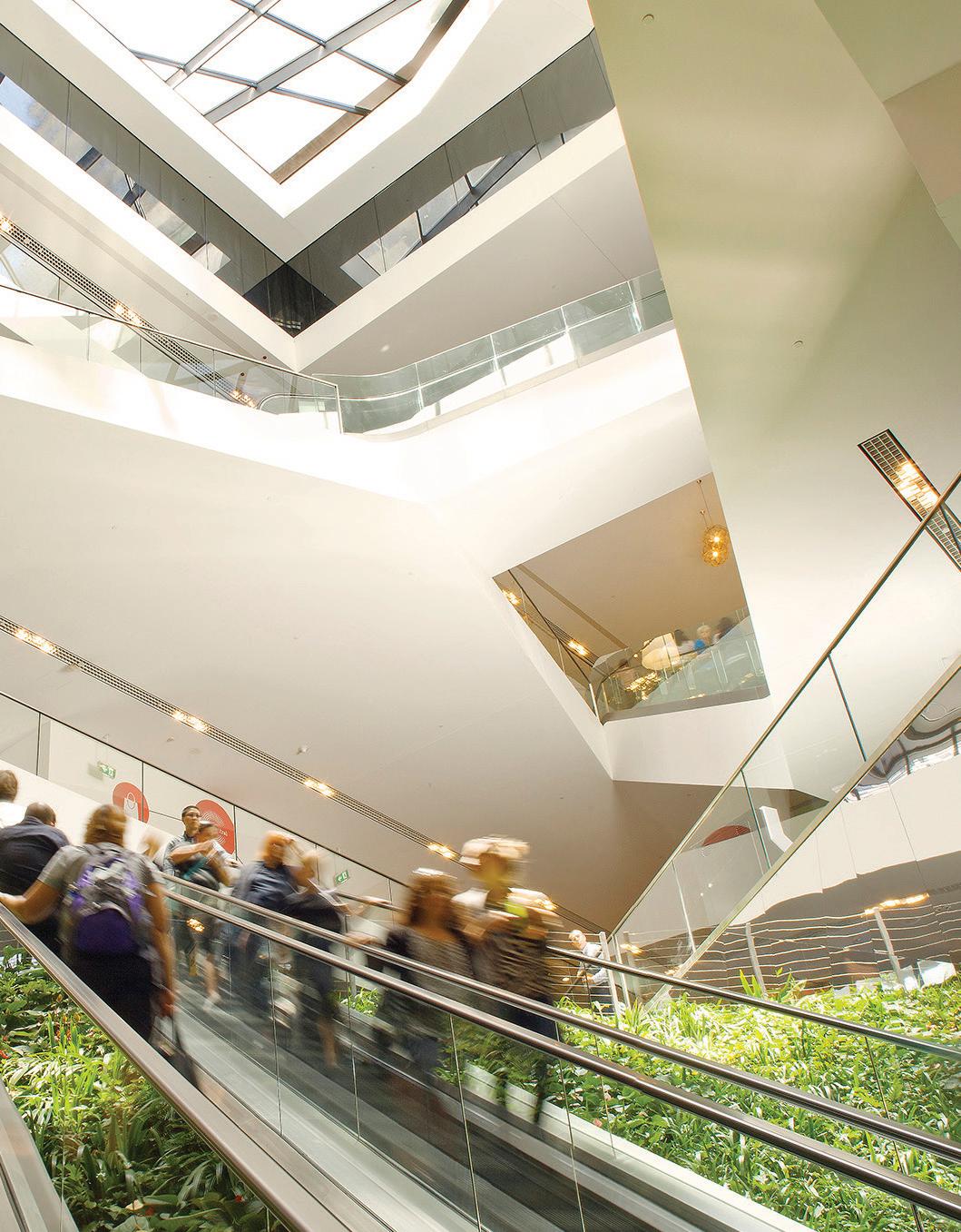
Almost instinctively, we know that any infrastructure that welcomes nature within its design is good for us, of course. Here are some of the direct benefits that biophilic design can have.

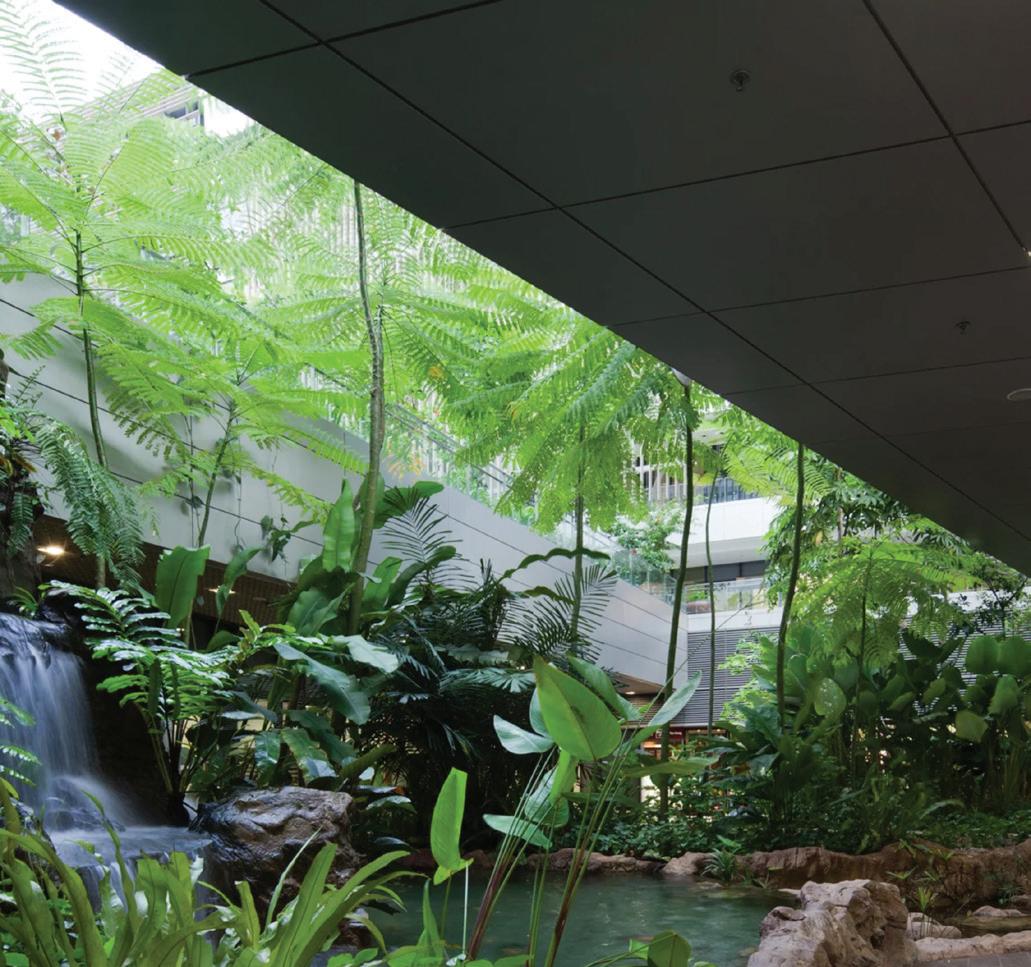
Many studies have shown that including plants, water features, and other natural elements in a built environment can reduce stress. It can also increase pain tolerance and improve mental health. A 2014 study showed that elements such as nature’s sounds improved mental well-being by as much as 37% as compared to ambient urban noise. Another scientific experiment revealed that when surgery patients were exposed to organic aromatherapy, a whopping 45% of them needed less morphine and 56% asked for fewer painkillers! Children that have grown up in greener neighborhoods have been found to have lower levels of asthma.

Wait, it gets even better! Research has shown that biophilic cities were found to have higher levels of social connectivity, mental health, and quality of life! They also tend to have lower crime rates, levels of aggression, and violence. Plus, cities with ‘green gyms’ or outdoor gyms have been proven to build social connectivity, physical health, and mental well-being.
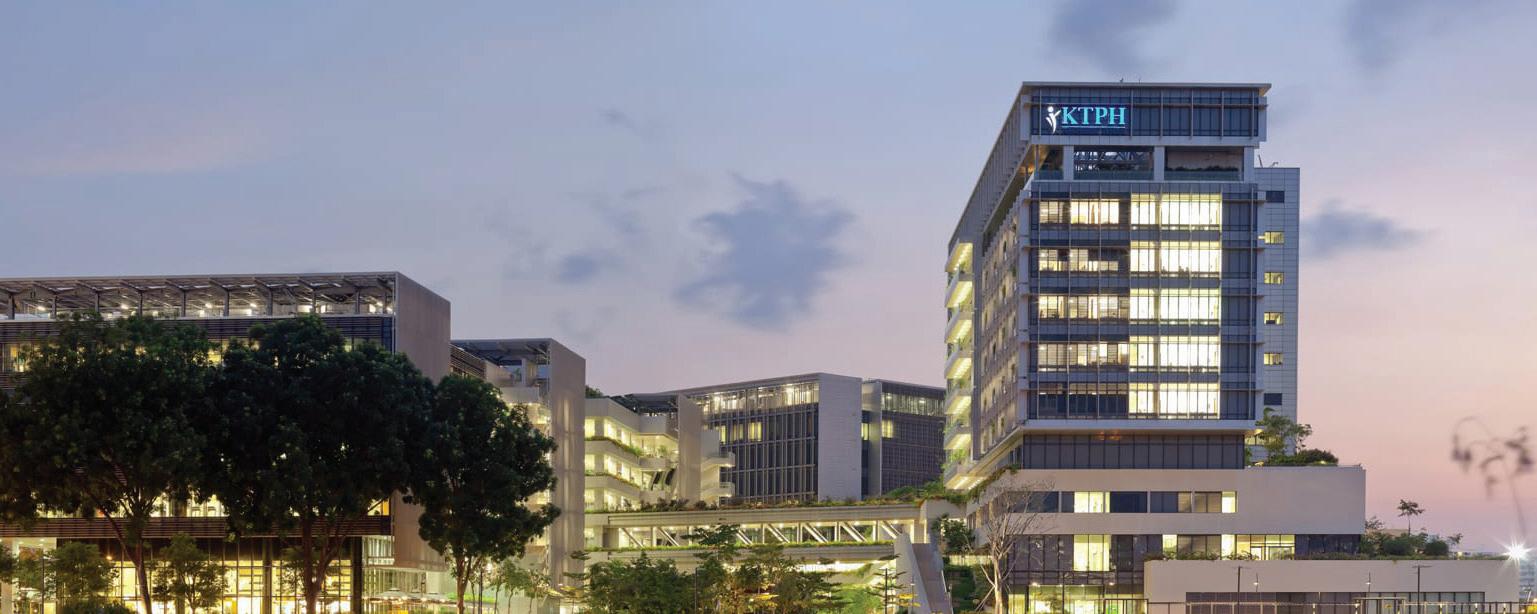
 BY CPG CONSULTANTS AND RMJM
BY CPG CONSULTANTS AND RMJM
Winner of the Stephen R. Kellert Biophilic Design Award, every available surface in the hospital had been maximized in close proximity to garden views. The hospital becomes part of a larger ecosystem as it sustains host plants and varied habitats throughout Singapore. Its natural approach not only benefits the occupants’ health and well-being, but it also serves as a compelling model for public play in a more natural setting.